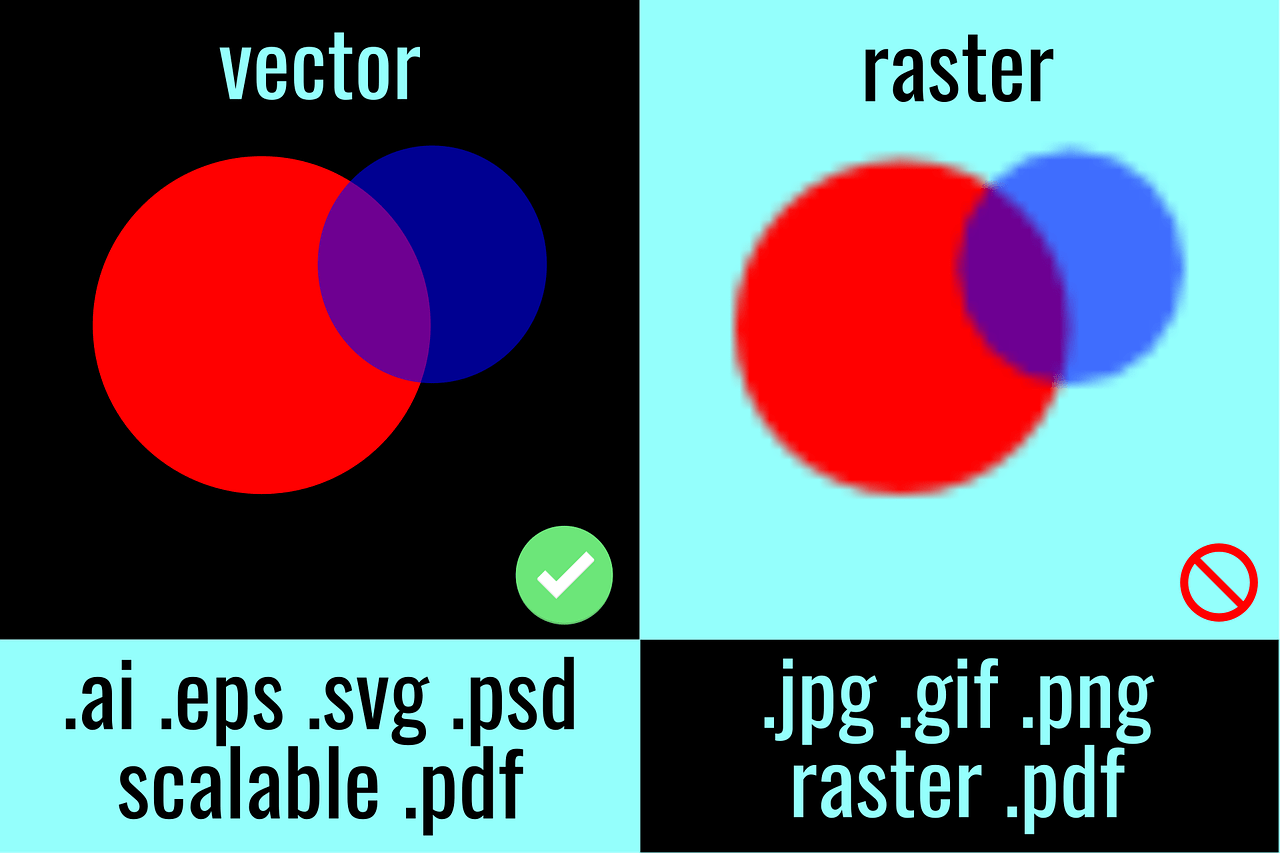Raster images consist of individual pixels of colors, and each pixel is essential in displaying the overall image. The raster image is also known as a bitmap image. Individually, every single pixel looks like a colored dot, but as a whole, these small colored dots complete a vivid and detailed image. Raster images can easily portray complex visuals. The best example of raster images is the pictures created by digital cameras. Both online and printed pictures of digital cameras are raster images.
Vector Image
Vector graphics use sequential commands which place lines or shapes in 2D or 3D. Vector images are paths made with mathematical formulas. Each of these formulas describes these paths’ shape and colour. One can design vector images infinitely as they are made with mathematical formulas. Vector images are best for designs that are simple and use solid colours. Vector graphics are best for printing as they consist of mathematical formulas.

Difference between Vector Art and Raster Image
1. Vector graphics consist of anchored dots and connected by lines and curves using mathematical formulas’ vector graphics are resolution independent, which is why their quality will not be affected by any change in size. Instead, raster images depend upon the number of pixels. Each image has a fixed number of pixels, and it affects its quality.
2. Raster images are not resolution-independent as it depends on the number of pixels in any image; if the number of pixels is low resolution will be low. If we enlarge the size of the image, it will become blurry. In contrast, vector images remain smooth if we resize them. It will not affect their resolution.
3. Vector arts consists of lines, unlike raster images. It makes the device independent. Their quality will not be affected by any device as they are made of dots or pixels. Their lines are sharp and do not depend on the number of dots available on the printer. Vector images can be resized easily without affecting the size of the file and still printed clearly.
4. Raster images depend on the number of pixels. Any change in the size of the image will affect its resolution. By increasing the number of pixels, the file will become more prominent and will cover more space. If a high-resolution image print at a small size, it will destroy the image by cramming the pixels together.
5. Raster images can display many colors in a single image are capable of color editing. In comparison, vector images use the simple color like light shading at a high resolution.
6. Raster images are best for photo editing and digital paintings by using Photoshop to compress them for storage. They are ideal for photography and print materials.
7. Vector images do not depend on resolution, so they are best for creating logos, illustrations, fonts, coin designs, patches, t-shirts designs, business cards, billboards, 2d or 3d computer animations.
8. Raster images can create near-to-life graphics as they can use perfect color.
9. Blends, Shadows, and Gradients:
On the other hand, vector graphics cannot create close to life pictures as they have limited color blending, shadows, and gradients. Even if we try to make it will be a hectic process as every change in color will need modification in shape.
10. Raster file types are JPG, GIF, PNG, TIF, BMP AND PSD. Vector file types are AI, CDR, and SVG.
11. Raster images can be edit by using programs like Photoshop. It will change the image’s resolution according to the changes required in the size of the image.
12. Vector art can be resized without affecting its quality by using programs like adobe illustrator and CorelDraw.
Conclusions
Raster images use bitmaps for storing information. The larger photos will need a large file for storage, which means more disk space. These images can be compressed by using formats gif and jpeg. These images can be shortened, but enlarging them will affect the quality of images. It will make them blurry. For different sizes, vector images are best. As vector image is made of curves and lines, they can be easily converted into any size. The photo will remain smooth, so vector images are best for printing small business card to large billboards. A vector image can be easily enlarged without affecting the resolution of the picture. In vector graphics, files are created as form of vector statements, which results in a series of smaller files. Raster graphics are perfect for smooth and less expensive images and vector graphics can produce high resolution images in any size without disturbing the quality.




